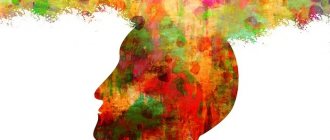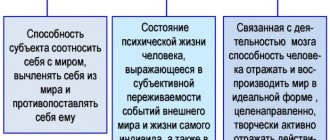Crowd structure: core, band and periphery
Any crowd - in transport, at a concert or a football match - always remains an orderly, albeit very mobile structure. Today it is customary to distinguish three elements in it: the core, the middle zone and the periphery. The core of the crowd usually lies near the point where everyone's attention is concentrated: the stage, the entrance, the exit. This is where people stand most densely, even if the crowd is moving: for example, everyone is slowly walking towards the metal detectors. There may be several cores in the crowd if there are several points of interest: ticket offices, stairs, or even just narrow passages.
The middle zone is the place from which people try to get into or out of the core of the crowd. There is always more space here, and the participants are constantly on the move. The periphery is the last frontier of the crowd. Here stand or wander those who are just about to join the crowd of people. On the periphery you can move much more freely than in the core, but this is the place that turns out to be the most dangerous in case of panic. The core of the crowd is capable of moving rapidly, so that if an object on the periphery suddenly becomes the focus of attention, the human flow instantly rushes there. Those who have just enjoyed noticeable freedom will instantly find themselves pressed against the nearest obstacle: a wall, a fence, a parapet. This is why the safest place in a crowd is neither the periphery nor the core, but the moving middle zone. In this transition zone you can still maneuver, and you always have a choice of where to go, or whether to go at all.
Psychology of the crowd. Or the secret of crowd control
What is a crowd?
Psychology of the crowd. Or the secret to controlling the masses.
1. The concept of a crowd. What is a crowd?
The idea of a crowd usually comes from people's personal experiences. Almost everyone has either been in a crowd or seen its behavior from the outside. Sometimes, succumbing to simple human curiosity, people join a group viewing and discussing some event. Growing in numbers, becoming infected with the general mood and interest, people gradually turn into a discordant, disorganized aggregation, or crowd.
A crowd is an unstructured accumulation of people, devoid of a clearly recognized commonality of goals, but mutually connected by the similarity of their emotional state and a common object of attention.
The term “crowd” entered social psychology during the period of powerful revolutionary upsurge of the masses at the end of the 19th and beginning of the 20th centuries. By a crowd, psychologists at that time understood mainly weakly organized actions of workers against the exploiters.
The crowd as a subject of mass forms of non-collective behavior often becomes:
- public, which is understood as a large group of people arising on the basis of common interests, often without any organization, but always in a situation that affects common interests and allows for rational discussion;
- a contact, outwardly disorganized community, acting extremely emotionally and unanimously;
- a collection of individuals who make up a large amorphous group and for the most part do not have direct contacts with each other, but are connected by some common more or less constant interest. These are mass hobbies, mass hysteria, mass migrations, mass patriotic or pseudo-patriotic frenzy.
Psychology of the crowd. Or the secret to controlling the masses.
In mass forms of non-collective behavior, unconscious processes play a large role. Based on emotional arousal, spontaneous actions arise in connection with some impressive events that affect the main values of people during, for example, their struggle for their interests and rights.
Even the main stages of crowd formation have been defined:
Formation of the core of the crowd.
The initial core of the crowd may be formed under the influence of rationalistic considerations and set itself very specific goals. But later the core grows like an avalanche and spontaneously. The crowd grows, absorbing people who, it would seem, had nothing in common with each other before. A crowd is spontaneously formed as a result of some incident that attracts the attention of people and gives rise to interest in them (more precisely, at the very beginning - curiosity). Excited by this event, the individual who has joined those already assembled is ready to lose some of his usual self-control and receive exciting information from the object of interest. A circular reaction begins, encouraging those gathered to express similar emotions and satisfy new emotional needs through psychic interaction.
Circular reaction constitutes the first stage of the formation and functioning of the crowd. The whirling process. The second stage begins simultaneously with the whirling process, during which the senses become even more acute and there is a readiness to respond to information coming from those present. The internal whirling based on the ongoing circular reaction increases. Excitement also increases. People are predisposed not only to joint, but also to immediate action.
The emergence of a new common object of attention. The circling process prepares the third stage of crowd formation. This stage is the emergence of a new common object of attention on which people's impulses, feelings and imagination are focused. If initially the common object of interest was an exciting event that gathered people around it, then at this stage the new object of attention becomes the image created in the process of circling in the conversations of crowd participants. This image is the result of the creativity of the participants themselves. It is shared by everyone, gives individuals a common orientation and acts as an object of joint behavior. The emergence of such an imaginary object becomes a factor that unites the crowd into a single whole.
Activation of individuals through excitement. The last stage in the formation of a crowd is the activation of individuals through additional stimulation through the excitation of impulses corresponding to an imaginary object. Such (suggestion-based) stimulation most often occurs as a result of the leadership of a leader. It encourages the individuals who make up the crowd to take specific, often aggressive, actions. Among those gathered, instigators usually stand out, who initiate active activity in the crowd and gradually direct its behavior. These may be politically and mentally immature and extremist-minded individuals. Thus, the composition of the crowd is clearly defined.
The core of the crowd, or instigators, are subjects whose task is to form a crowd and use its destructive energy for their intended purposes. It is these people who master the psychology of the crowd or the secret of crowd control.
Crowd participants are subjects who joined it as a result of identifying their value orientations with the direction of the crowd’s actions. They are not instigators, but they find themselves in the sphere of influence of the crowd and actively participate in its actions. A particular danger is posed by aggressive individuals who join the crowd solely because of the opportunity to release their neurotic, often sadistic, inclinations.
Among the crowd members are also those who are conscientiously mistaken. These subjects join the crowd due to an erroneous perception of the situation; they are driven, for example, by a falsely understood principle of justice.
Common people join the crowd. They don't show much activity. They are attracted to excess as an exciting spectacle that diversifies their boring, dull existence.
Highly suggestible people who succumb to the general infectious mood find a place in the crowd. Without resistance, they surrender to the power of natural phenomena.
Participants in the crowd also include simply curious people, watching from the sidelines. They do not interfere in the course of events, but their presence increases the mass character and enhances the influence of the element of the crowd on the behavior of its participants.
2. Crowd classification
Like any other social phenomenon, a crowd can be classified on various grounds. If we take such a feature as controllability as the basis for the classification (this is one important secret of crowd control), then we can distinguish the following types of crowds.
Spontaneous crowd. It is formed and manifested without any organizing principle on the part of a specific individual.
Driven crowd. It is formed and manifested under the influence, influence from the very beginning or subsequently of a specific individual who is its leader in a given crowd.
Organized crowd. This variety is introduced by G. Le Bon, considering as a crowd both a collection of individuals who have embarked on the path of organization and an organized crowd. We can say that he sometimes does not make a difference between an organized and an unorganized crowd. Although it is difficult to agree with this approach. If a community of people is organized, it means that it has structures of management and subordination. This is no longer a crowd, but a formation. Even a squad of soldiers, as long as it has a commander, is no longer a crowd.
If we take the behavior of people in it as a basis for classifying a crowd, we can distinguish several types and subtypes.
Occasional crowd. Formed on the basis of curiosity about an unexpected incident (road accident, fire, fight, etc.).
Conventional crowd. Formed on the basis of interest in any pre-announced mass entertainment, spectacle or other socially significant specific occasion. I am only willing to temporarily follow rather diffuse norms of behavior.
Expressive crowd. It is forming, just like a conventional crowd. It jointly expresses the general attitude towards any event (joy, enthusiasm, indignation, protest, etc.)
Ecstatic crowd. Represents an extreme form of expressive crowd. It is characterized by a state of general ecstasy based on mutual rhythmically increasing infection (mass religious rituals, carnivals, rock concerts, etc.).
Crowd at a rock concert
Active crowd. It is formed - just like the conventional one; carries out actions regarding a specific object. The current crowd includes the following subspecies.
1. Aggressive crowd. United by blind hatred of a specific object (any religious or political movement, structure). Usually accompanied by beatings, pogroms, arson, etc.
2. Panic crowd. Spontaneously fleeing from a real or imaginary source of danger.
3. The money-grubbing crowd. Enters into a disorderly direct conflict for the possession of any values. It is provoked by authorities who ignore the vital interests of citizens or encroach on them (the storming of places in outgoing transport, the frantic grabbing of products in trade enterprises, the destruction of food warehouses, the siege of financial (for example, banking) institutions, in small quantities it manifests itself in places of major disasters with significant human casualties victims, etc.).
4. Rebel crowd. It is formed on the basis of general fair indignation at the actions of the authorities. The timely introduction of an organizing principle into it can elevate a spontaneous mass action to a conscious act of political struggle.
3. Psychological properties of the crowd
Social psychologists note a number of psychological characteristics of the crowd.
Failure to be aware. Important psychological characteristics of the crowd are its unconsciousness, instinctiveness and impulsiveness. If even one person is rather weakly amenable to the messages of reason, and therefore does most of his actions in life thanks to emotional, sometimes completely blind, impulses, then the human crowd lives exclusively by feeling, logic is contrary to it. An uncontrollable herd instinct comes into play, especially when the situation is extreme, when there is no leader and no one shouts restraining words of command. The heterogeneous in each of the individuals - a particle of the crowd - is buried in the homogeneous, and unconscious qualities take over. General qualities of character, controlled by the unconscious, are united together in a crowd. An isolated individual has the ability to suppress unconscious reflexes, while a crowd does not have this ability.
Features of thinking. The crowd thinks in images, and the image evoked in its imagination, in turn, evokes others that have no logical connection with the first. The crowd does not separate the subjective from the objective. She considers as real images evoked in her mind and often having only a very distant connection with the fact she observes. The crowd, capable of thinking only in images, is receptive only to images.
Crowd
The crowd does not reason or think. She accepts or rejects ideas entirely. She does not tolerate any disputes or contradictions. The reasoning of the crowd is based on associations, but they are connected to each other only by apparent analogy and consistency. The crowd is capable of perceiving only those ideas that are simplified to the extreme. The judgments of the crowd are always imposed on them and are never the result of full discussion.
Categorical. Without any doubt as to what is truth and what is error, the crowd expresses the same authority in its judgments as intolerance.
Conservatism. Being fundamentally extremely conservative, the crowd has a deep aversion to all innovations and experiences boundless reverence for traditions.
Suggestibility. Freud put forward a very productive idea to describe the phenomenon of crowds. He viewed the crowd as a human mass under hypnosis. The most dangerous and most significant thing in crowd psychology is its susceptibility to suggestion.
Any opinion, idea or belief instilled in the crowd is accepted or rejected entirely and treats them either as absolute truths or as absolute errors.
In all cases, the source of suggestion in the crowd is an illusion born in one individual thanks to more or less vague memories. The evoked idea becomes the nucleus for further crystallization, filling the entire area of the mind and paralyzing all critical faculties.
Infectivity. Psychological contagion contributes to the formation of special properties in the crowd and determines their direction. Man is prone to imitation. Opinions and beliefs are spread to the crowd through contagion.
The emotional-volitional sphere of the crowd is also characterized by numerous psychological features.
Emotionality. In a crowd, there is such a socio-psychological phenomenon as emotional resonance. People involved in excesses are not just next to each other. infect others and become infected themselves from them. The term “resonance” is applied to this phenomenon because crowd participants, when exchanging emotional charges, gradually intensify the general mood to such an extent that an emotional explosion occurs, which is difficult to control by consciousness. The onset of an emotional explosion is facilitated by certain psychological conditions of individual behavior in a crowd.
High sensuality. The feelings and ideas of the individuals who form the whole called the crowd take one and the same direction. A collective soul is born, which, however, is of a temporary nature. The crowd knows only simple and extreme feelings.
The various impulses to which the crowd obeys may, depending on the circumstances (namely, the nature of the excitement), benevolent or evil, heroic or cowardly, but they are always so strong that no personal interest, not even a sense of self-preservation, can suppress them.
The strength of the crowd's feelings is further increased by the lack of responsibility. Confidence in impunity (all the stronger, the larger the crowd) and the consciousness of significant (albeit temporary) power make it possible for crowds of people to show such feelings and perform such actions that are simply unthinkable and impossible for an individual.
Whatever the feelings of the crowd, good or bad, their characteristic feature is one-sidedness. The one-sidedness and exaggeration of the feelings of the crowd lead to the fact that it knows neither doubts nor hesitations.
In its eternal struggle against reason, feeling has never been defeated.
Extremism. The forces of the crowd are aimed only at destruction. Instincts of destructive ferocity lie dormant in the depths of the soul of almost every individual. Giving in to these instincts is dangerous for an isolated individual, but being in an irresponsible crowd, where he is guaranteed impunity, he can freely follow the dictates of his instincts. In the crowd, the slightest bickering or contradiction on the part of any speaker immediately provokes furious screams and violent curses. The normal state of a crowd that encounters an obstacle is rage. The crowd never values its life during a riot.
Motivation. Self-interest is very rarely a powerful motive force in a crowd, while in the individual it comes first. Although all the desires of the crowd are very passionate, they still do not last long, and the crowd is just as little capable of showing persistent will as it is of prudence.
Irresponsibility. It often gives rise to incredible cruelty of an aggressive crowd, incited by demagogues and provocateurs. Irresponsibility allows the crowd to trample the weak and bow before the strong.
4. Psychological characteristics of an individual in a crowd
In a crowd, an individual acquires a number of specific psychological characteristics that may be completely unusual for him if he is in an isolated state. These features have a direct impact on his behavior in the crowd.
A person in a crowd is characterized by the following traits.
Anonymity. An important feature of an individual’s self-perception in a crowd is the feeling of one’s own anonymity. Lost in the “faceless mass,” acting “like everyone else,” a person ceases to be responsible for his own actions. Hence the cruelty that usually accompanies the actions of an aggressive crowd. A member of the crowd appears to be anonymous in it. This creates a false sense of independence from the organizational ties by which a person, wherever he is, is included in the work collective, family and other social communities.
Instinctivity. In a crowd, an individual gives himself over to instincts that he never gives free rein to in other situations. This is facilitated by the anonymity and irresponsibility of the individual in the crowd. His ability to rationally process perceived information decreases. The capacity for observation and criticism that exists in isolated individuals disappears completely in a crowd.
Aggressive crowd
Unconsciousness. The conscious personality disappears and dissolves in the crowd. The predominance of the unconscious personality, the same direction of feelings and ideas determined by suggestion, and the desire to immediately transform inspired ideas into action are characteristic of the individual in the crowd.
A state of hypnotic trance. An individual, having spent some time among the active crowd, falls into a state that resembles the state of a hypnotized subject. He is no longer aware of his actions. In him, as in a hypnotized person, some abilities disappear, while others reach an extreme degree of tension. Under the influence of the suggestion acquired in the crowd, the individual performs actions with uncontrollable swiftness, which also increases, since the influence of the suggestion, the same for everyone, is increased by the power of reciprocity.
A feeling of irresistible strength. An individual in a crowd acquires the consciousness of an irresistible force due to sheer numbers. This consciousness allows him to succumb to hidden instincts: in a crowd he is not inclined to curb these instincts precisely because the crowd is anonymous and is not responsible for anything. The sense of responsibility, which usually restrains individuals, completely disappears in the crowd - here the concept of impossibility does not exist.
Infectivity. In a crowd, every action is contagious to such an extent that the individual very easily sacrifices his personal interests to the interests of the crowd. Such behavior is contrary to human nature itself, and therefore a person is capable of it only when he is part of the crowd.
Amorphous. In a crowd, the individual traits of people are completely erased, their originality and personal uniqueness disappear.
Irresponsibility. In a crowd, a person completely loses his sense of responsibility, which is almost always a limiting factor for an individual.
Social degradation. Becoming a part of the crowd, a person seems to fall several steps lower in his development. In an isolated situation - in ordinary life he was most likely a cultured person, but in a crowd - he is a barbarian, i.e. an instinctive creature. In a crowd, an individual exhibits a tendency toward arbitrariness, violence, and ferocity. A person in a crowd also experiences a decrease in intellectual activity.
5. Crowd behavior.
The behavior of the crowd reveals both ideological influences, with the help of which certain actions are prepared, and changes in mental states that occur under the influence of any specific events or information about them. In the actions of the crowd, there is a junction and practical implementation of influences, both ideological and socio-psychological, and their interpenetration into the real behavior of people.
The climate of mass hysteria serves as the background against which the most tragic actions often unfold.
As already mentioned, one type of crowd behavior is panic. Panic is an emotional state that arises as a result of either a lack of information about some frightening or incomprehensible situation, or its excessive excess and manifests itself in impulsive actions.
Factors that can cause panic are varied. Their nature can be physiological, psychological and socio-psychological. There are known cases of panic in everyday life as a consequence of disasters and natural disasters. When people panic, they are driven by unaccountable fear. They lose self-control, solidarity, rush about, and do not see a way out of the situation.
Factors that have a particularly strong influence on crowd behavior are the following.
Superstition is a firmly established false opinion that arises under the influence of fear experienced by a person. However, there may be a superstitious fear, the reasons for which are not realized. Many superstitions involve believing in something. They affect a variety of people, regardless of their level of education and culture. For the most part, superstition is based on fear and it intensifies many times over in a crowd.
Illusion is a type of false knowledge entrenched in public opinion. It may be the result of deception of the sense organ. In this context, we are talking about illusions related to the perception of social reality. Social illusion is a kind of ersatz resemblance to reality, created in a person’s imagination in place of genuine knowledge, which for some reason he does not accept. Ultimately, the basis of illusion is ignorance, which can produce the most unexpected and undesirable effects when manifested in a crowd.
Prejudice is false knowledge that has turned into belief, or more precisely, into prejudice. Prejudice is active, aggressive, assertive, and desperately resists genuine knowledge. This resistance is so blind that the crowd will not accept any argument contrary to prejudice.
6. Leader in the crowd and the secret of crowd control.
Often the behavior of a crowd is determined by the presence or absence of a leader. A leader in a crowd may appear as a result of a spontaneous choice, and often as a self-appointment. A self-proclaimed leader usually adapts to the moods and feelings of the people in the crowd and can relatively easily induce its participants to behave in a certain type.
Any collection of individuals instinctively submits to the authority of the leader. The hero whom the crowd worships is truly a god for them. In the soul of the crowd, it is not the desire for freedom that prevails, but the need for submission. The crowd is so eager to obey that it instinctively submits to the one who declares himself its ruler.
People in a crowd lose their will and instinctively turn to the one who has preserved it. Always ready to rebel against a weak government, the crowd subserviently and bows before the strong government. Left to their own devices, the crowd soon tires of its own riots and instinctively strives for slavery.
The crowd is as intolerant as it is trusting of authority. She respects strength and is little influenced by kindness, which for her only means a kind of weakness. She demands strength and even violence from the hero, she wants to be owned and suppressed. She longs to be afraid of her master. The power of the leaders is very despotic, but it is this despotism that forces the crowd to obey.
In a crowd of people, the leader is often only the leader, but, nevertheless, his role is significant. His will is the nucleus around which opinions crystallize and unite. The role of leaders is mainly to create faith, no matter what kind. This explains their great influence on the crowd.
Most often, the leaders are mentally unbalanced people, half-crazy, on the verge of madness. No matter how absurd the idea they proclaim and defend, and the goal towards which they strive, their convictions cannot be shaken by any arguments of reason. There is one more quality that usually distinguishes the leaders of the crowd: they are not thinkers - they are people of action.
Crazy leader
The leader class is divided into two categories:
- people are energetic, with a strong will that appears in them only for a short time;
- people with a strong and at the same time persistent will (they are much less common).
The secret of crowd control, which determines the influence of a leader on the crowd, is his charm. Charm is a type of dominance of an idea or personality over the mind of an individual. It can consist of opposing feelings, for example, admiration and fear, and can be of two types: acquired and personal. Personal charm is different from artificial or acquired and does not depend on title or power. It is based on personal superiority, on military glory, on religious fear, but not only on this. The nature of charm involves many different factors, but one of the most important has always been and remains success.
Controlling a crowd has a dual nature, because the crowd is almost always the object of control by two forces: on the one hand, it is led by leaders, leaders; on the other hand, the crowd is dealt with by public order forces and administrative authorities.
The possibilities of crowd control vary significantly depending on who strives to be a leader in it - a demagogue or an intellectual. As they say in the East, the one who wants to control the crowd is trying to ride the tiger. However, managing individuals is much more difficult than managing a crowd.
The mechanisms of mass behavior can be used by politicians with any views and any moral level. In such cases, the crowd becomes a toy in the hands of the leader. Typically, people who want to lead a crowd intuitively know how to influence it. They know that in order to convince a crowd, you must first understand what feelings inspire them, pretend to share them, and then conjure up in the crowd’s imagination images that seduce them. The crowd should always present any ideas in solid images, without indicating their origin.
A speaker who wants to captivate a crowd must overuse strong expressions. Exaggerating, asserting, repeating and never trying to prove anything by reasoning are the methods of argumentation for the crowd.
A statement only has an impact on the crowd when it is repeated many times in the same expressions: in this case, the idea is implanted in the minds so firmly that it is finally perceived as a proven truth, and then crashes into the deepest regions of the unconscious. This technique is also quite successfully used by leaders or leaders of the crowd.
A theoretical analysis of the mechanisms of crowd formation can to some extent help administrative authorities control crowd behavior. They face a twofold task:
1) awaken the crowd’s awareness of their actions, restore to them the lost sense of self-control and responsibility for their behavior;
2) prevent the formation of a crowd or disband an already formed crowd.
The following can be considered effective:
- reorienting the attention of the individuals who make up the crowd. As soon as the attention of people in a crowd is distributed among several objects, separate groups immediately form, and the crowd, just united by the “image of the enemy” or readiness for joint action, immediately disintegrates. The traits of the personal structure of individuals, suppressed by the influence of the crowd, come to life - each person individually begins to regulate his behavior. The crowd ceases to be active, functioning and gradually disperses;
- an announcement over the loudspeaker that hidden cameras are filming crowd members;
- addressing crowd members with the names of specific surnames, first names, patronymics, the most common in the area;
— application of measures to capture and isolate crowd leaders. If, by some accident, the leader disappears and is not immediately replaced by another, the crowd again becomes a simple gathering without any connection or stability. In this case, it is easier to carry out crowd dispersal measures.
In fact, it is very difficult to speak with a voice of reason to a crowd. She perceives only orders and promises.
Literature:
1. American sociological thought. - M., 1994.
2. Lebon G. Psychology of peoples and masses. - St. Petersburg, 1996.
3. Mitrokhin S. Treatise on the Crowd // XX Century and the World. - 1990. No. 11.
4. Moscovici S. Century of Crowds. - M., 1996.
5. Criminal crowd. - M., 1998.
6. Psychology of domination and submission: Reader. - Minsk, 1998.
7. Psychology of the masses: Reader. - Samara, 1998.
8. Psychology of crowds. - M., 1998.
9. Rutkevich A.M. Man and crowd // Dialogue. - 1990. - No. 12.
10. Freud 3. “I” and “It”. - Tbilisi, 1991.
Source:
Social Psychology. Tutorial. Series “Higher Education” Compiled by: R.I. Mokshantsev, A.V. Mokshantseva. Moscow-Novosibirsk, 2001
Laws of motion: head rotation and phase transition
In a normal state, people in a crowd walk one after another. We have all observed this more than once in the subway, near stairs, passages and escalators. In this case, everyone adheres to the same speed and takes steps of more or less the same length - after all, people tend to keep their distance from other people and obstacles. Of course, in any crowd there are those who squeeze forward, maneuvering “according to circumstances,” depending on the openings. But their actions do not lead to panic, only to irritation.
The moment when an orderly system is about to collapse into chaos is actually quite easy to notice. Normally, heads in a crowd are usually turned in one direction, since all people see one common goal in front of them and use the same rules of movement. But when panic sets in, heads turn in different directions. The general vector of movement gets confused, new directions arise, and disorder ensues.
Experts call this moment a “phase transition.” This concept is borrowed from the field of thermodynamics: here it refers to the moment when a substance passes from one thermodynamic phase to another under the influence of external factors - it begins to melt, evaporate, turn into drops or crystals. But if in the field of physics it is easy to understand what causes a phase transition, then in the field of managing human flows everything is far from so simple.
Today we know that crowding often occurs due to obstacles. In order to simulate the interaction of people with them, for example, in the subway or at a train station, physicists Tomasso Toffoli from Boston University (USA) and Norman Morgolus from the Massachusetts Institute of Technology (USA) proposed using cellular automata - discrete mathematical models that are used to describe physical phenomena, including diffusion. Thanks to working with such models, their colleagues from the National Metallurgical Academy (Ukraine) recently managed to find out that a crowd passes obstacles fastest when the flow is divided into three equal parts, and slowest when it is broken in half. If the passage narrows, the smallest load and passage time is provided by a narrowing angle of 45 degrees, and the greatest by a right angle of 90 degrees.
The phenomenon of mass consciousness
The main hypothesis of this phenomenon was proposed by Freud himself. Its essence lies in the assumption that a group of people forming a crowd is endowed with a kind of collective intelligence and consciousness. Thanks to this, the enthusiasm that arises in each individual person and provoked by some kind of collective action in the crowd increases exponentially. Personal interests are leveled against the interests of the crowd.
Starting from the second half of the 19th century, in the scientific literature the concept of “mass psychology” began to be replaced by the concept of “mass consciousness”. If we proceed from the fact that mass consciousness often pushes the crowd to actions entailing dramatic social changes, then a logical question arises: can mass consciousness be called collective unconsciousness?
Sooner or later, any person, being in a crowd, regardless of the degree of education and level of intelligence, begins to lose individual consciousness, and his actions begin to be based on the collective unconscious. In terminological language, this phenomenon can be called the crowd effect.
Crowd control: aisle width and choral singing
A group of scientists from Xi'an University of Metallurgy and Construction (PRC) also conducted a series of studies to calculate what the critical passage width needed to evacuate people from the subway at different crowd densities would be. Experts have found that with a density of 0.2 people per square meter. m. (920 people in a large three-story station, of which 500 are on the floor with exits) the corridor and doors should be no narrower than 2 m, and with a density of 4.0 people per sq. m. m (18,400 people at the station, of which 10,000 are on the floor with exits) - not already 6 m. Scientists also noted that if the width of the passage is small, even a minor obstacle in it: for example, a cleaning apparatus - can create huge obstruct traffic and scare people.
Today, there are several technologies for eliminating panic in a crowd that has passed the “phase transition” or is ready for it. A panicked crowd always lacks rhythm, but if slow, rhythmic music starts playing from the speakers or from the stage, the panic may fade. The same applies to chanting. A classic case here, researchers of mass psychology call a rally at the velodrome in Paris in the 1930s. Then, due to a small fire, panic arose, which was neutralized by two psychologists who happened to be in the passage. They began chanting the later famous phrase: “Don’t push!”, which was quickly picked up by people around. As a result, the evacuation was peaceful and everyone left the velodrome happy with themselves and each other.
In fact, it is rhythm that regulates—and prevents panic—crowds at demonstrations, concerts and matches. Russian social psychologist, political scientist and publicist Dmitry Olshansky wrote in his book “Psychology of the Masses” that choral singing, especially the singing of marches, plays a huge role here. The rhythmic pattern in this genre is music of uniform movement in four steps: in a march, all four beats sound percussive and are equal in volume. The marching rhythm is characteristic of most of the famous hymns and revolutionary songs of different eras; The content of texts that instill a sense of hope and other positive emotions is also often similar. “Marseillaise”, “Varshavyanka”, “Venceremos”, as well as rock ballads and other songs have more than once become a kind of means of confronting fear and panic in acute situations - and remain so today. Rhythm gives people a sense of confidence and community, helping them predict others' movements and regulate their own.
Crowd Properties
Having described the changes that occur in the psychology of an individual who finds himself in a crowd, Le Bon turns his attention to the psychology of the crowd as a holistic entity. He names five main properties of the crowd:
Rice. 4. Psychological properties of the crowd according to Le Bon.
Impulsiveness, volatility and irritability of the crowd
In a crowd, a person loses the ability to control his instincts, impulsive emotional behavior becomes dominant.
Suggestibility and gullibility of the crowd
Suggestibility is the ability to easily and quickly accept the most implausible rumors. Information in the crowd arises and circulates in the form of rumors.
Exaggeration and one-sidedness of crowd feelings
One-pointed feelings spread very quickly through the crowd through suggestion and contagion, which help to exaggerate the feelings. The strength of the crowd's feelings is further increased by the lack of responsibility.
Intolerance, authority and crowd conservatism
The crowd is controlled only by simple and extreme feelings. The crowd accepts or rejects any idea or belief entirely, treating them as absolute truths. This is always the case with beliefs that are strengthened by suggestion rather than by reasoning. Intolerance and authoritative judgments are characteristic of any crowd.
Crowd morality
By the word “morality” Le Bon meant respect for social regulations and the constant suppression of instincts. The crowd is too impulsive and changeable, it can be prone to murder, arson and crime, but it is also capable of displaying devotion, self-sacrifice and selflessness, which is confirmed by numerous examples. Influences that arouse feelings of fame, honor, religion and patriotism among individuals in a crowd can cause people to even sacrifice their lives. Personal interest, which motivates the behavior of an individual, ceases to guide his behavior in a crowd. The crowd is governed by unconscious instincts and does not reason at all. Le Bon concluded: the crowd often falls under the influence of lower instincts and can be immoral, but sometimes it is an example of very high morality (88, p. 154).
"""Back Start Forward"""
Methods and characteristics of crowd studies. Crowd behavior
We know that the crowd is endowed with extremism. For its existence, a single faith is needed. Crowds are also not resistant to fluctuations; doubts lead to the risk of their fragmentation. Because of this, she tries to get rid of doubts and uncertainties, in which speakers help her. Speakers hammer into the crowd exaggerated judgments. Maintaining stability.
Another feature of crowd behavior is Illusion, which is created from the opinions of others, false information appears, it can deceive the senses.
Factors influencing crowds
An important factor in crowds is race. She needs to constantly maintain intellectual connectedness and emotional persuasion. Race has the power to transform ideas or needs into traditions. From here she is able to transmit these traditions to another race.
“People of all races worship one deity, calling him by different names - hope. After all, all their gods were one and only god,” wrote Le Bon. Litvak believes that hope must be killed. I agree with him, because when there is no hope, a person will listen to reason.
Another important factor is the use of formulas and certain words. The more vague the word or expression, the greater the influence. Words such as equality, socialism, democracy, freedom are perceived by the crowd as if the solution to all problems depends on them
Spiritual unity
Many researchers whose subject of study is the psychology of the masses agree that the crowd is an unorganized society. Its main characteristic has always been spiritual unity. In this case, it can be compared to something like a highly contagious infectious disease. The main “symptom” of the disease is a state of passion, which, at the time of a strong emotional outburst, spreads at high speed.
As an exception that confirms the above rule, we can consider a crowd that was formed as a result of the unification of people who have a similar way of thinking. Only like-minded people will be able to integrate, and not all those who have been infected by a common emotional state.
A feature of any group, especially an aggressive one, is categorical beliefs and conservatism. They can also be regarded as the foundation for spiritual unity. Based on the fact that the crowd is absolutely confident in the correctness of the line drawn between truth and error, it is characterized by intolerance.










